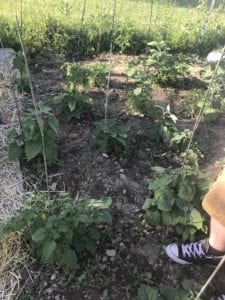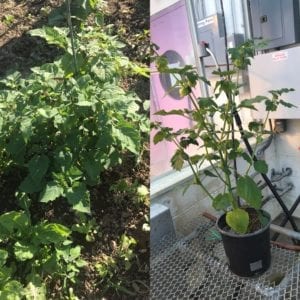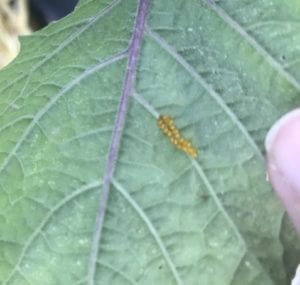Physalis Blog Post
Farm Visits
With the growing season in full swing we are starting to visit project participant farms to see how the Physalis plants perform in different environments and any challenges that may come with growing Physalis.

Physalis plants in Danby, NY
This past Tuesday we visited a plot of Physalis plans in Danby NY. The first thing we noticed was the size of the plant. Unlike our plants that are tall and lanky in pots in the greenhouse, these plants remained small and we observed much more lateral growth.

Both of these plants were started on the same day.
This was particularly interesting as we had started these plants in the greenhouse at BTI, where some of their growing cohort still remains, so we could clearly see the differences the growing environment had caused.

Three-lined potato beetle eggs founds on the underside of a Physalis peruviana leaf
In addition, we also observed some pest damage. The three-lined potato beetle was found in egg form as well as larvae. We have found that it is best to pinch off the eggs and larvae, and that within due time the plant will recover.

